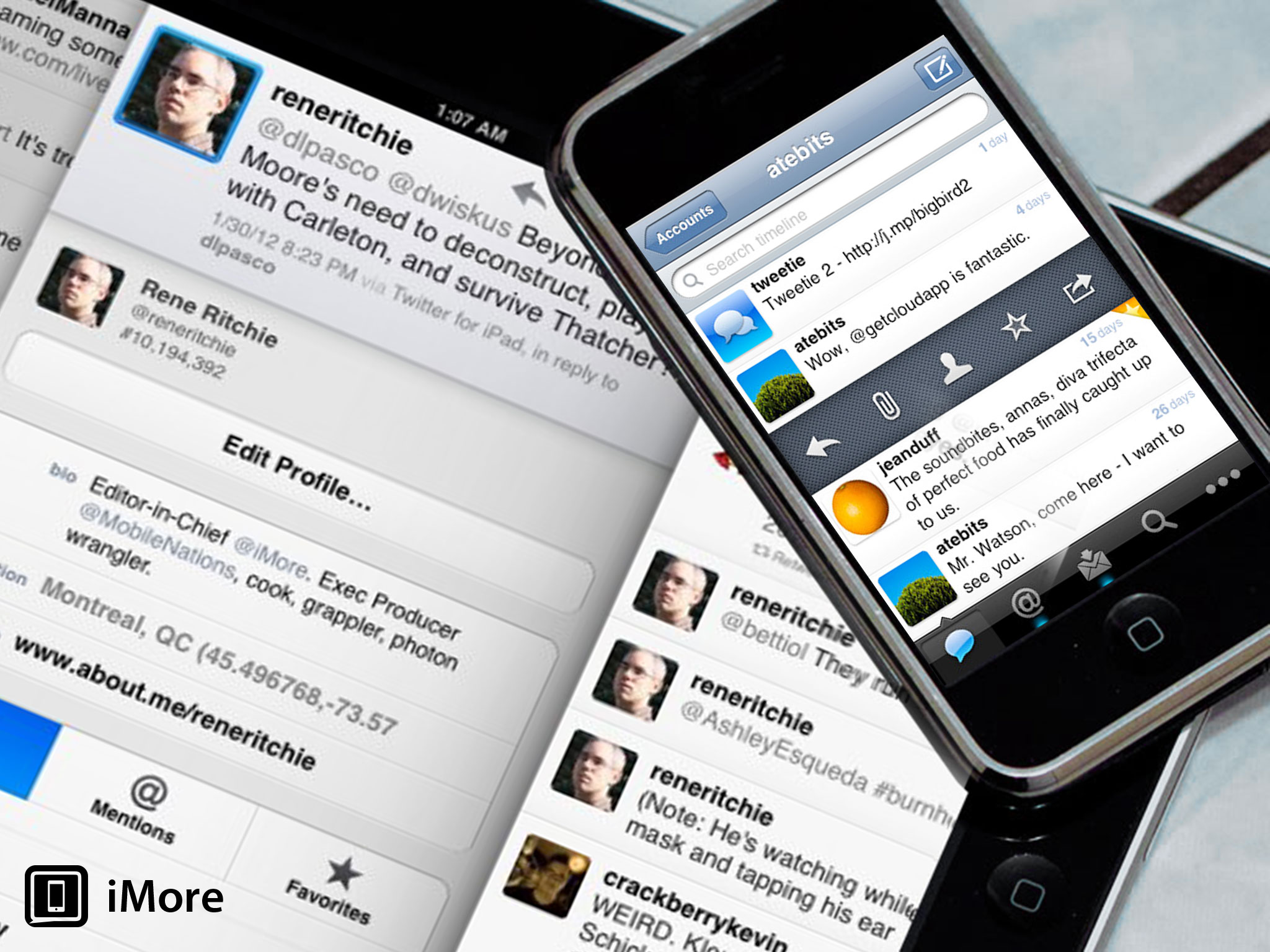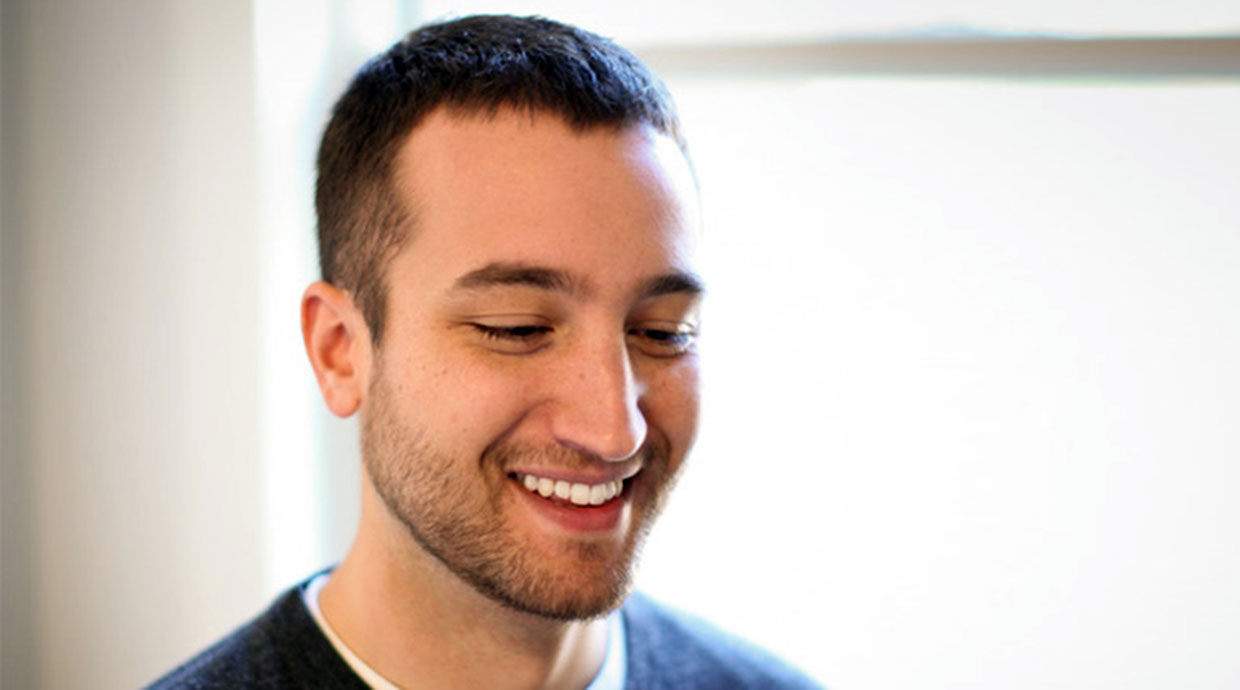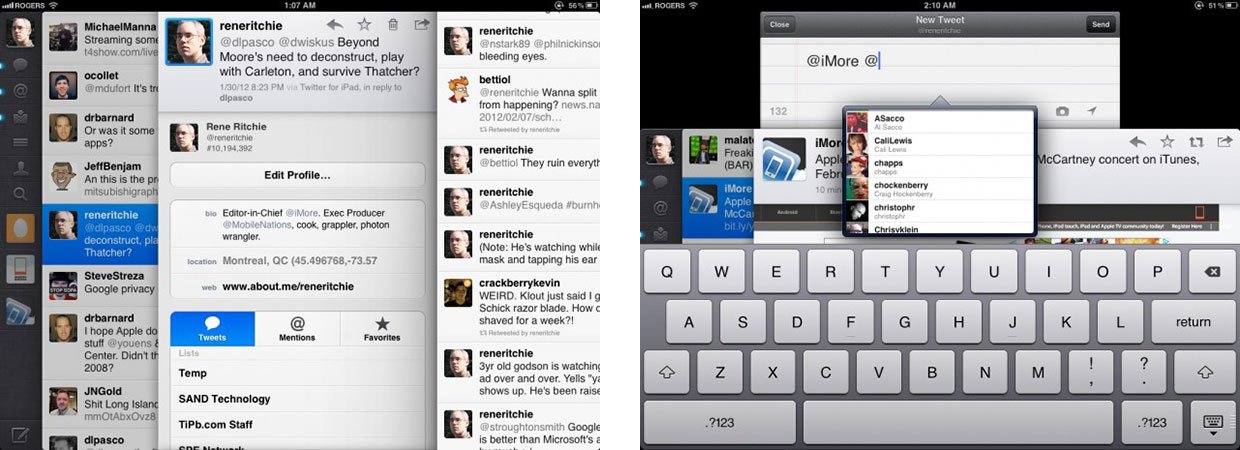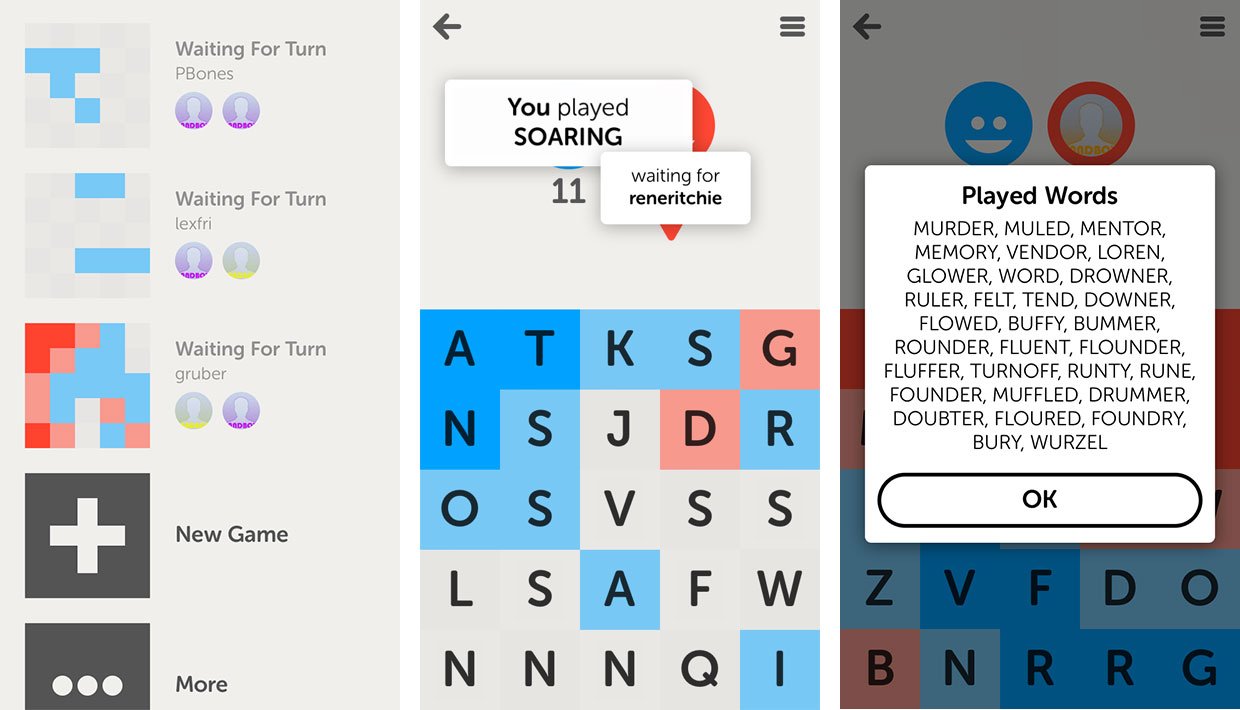Hall of fame: Loren Brichter and Tweetie

Tweetie for iPhone launched in 2008 and from the very beginning was described as the Twitter app Apple themselves would have made. While that was certainly meant to compliment Tweetie's native look and feel, and its incredible performance, it falls short of capturing the skill and vision of Loren Brichter, the man behind the app.
At the time, Brichter and Tweetie seemly came out of nowhere. Brichter, however, had been working at Apple as member of the original iPhone's OpenGL team, off the public -- and developer community -- radar. After leaving Apple and returning to the east coast, Brichter began his own indie development company, atebits. His first app was Scribbles for Mac. In a blog post [via the Internet Archive], Brichter described Scribbles like this:
Lately there has been a barrage of image editors for Mac OS X. No doubt, a few of them are pretty great, but Scribbles is unique. First of all, it's designed to do one thing insanely well: drawing. It's not an image-editor, or a photoshop-killer, or an excuse for cluttering your screen with two dozen translucent HUD's... it's a drawing app plain and simple. [...] The Mac needs a drawing tool that everyone can use. One of the primary design goals of Scribbles was to make the interface accessible to every potential user, from kids to pros. The hope is that this is evident as soon as you start it up. The entire interface (sans the menu bar) is entirely text-less. The interface is contained in a single window, and morphs between modes. Buttons that you don't need stay out of your way until you need them. The interface for dealing with layers is my personal favorite. For people not familiar with the concept, Scribbles makes layers intuitive.

On Debug 1, Brichter added:
MacPaint was my inspiration for Scribbles. It was also my first attempt at my own custom UI framework.
Custom UI frameworks is a theme Brichter would revisit again and again. After Scribbles, Brichter switched to iOS (then iPhone OS). And on November 19, 2008, he launched Tweetie.
The original release was functional and conventional, very much that Apple-style Twitter app. It earned Brichter considerable praise, including John Gruber's on Daring Fireball:
Tweetie, a brand-new $3 iPhone Twitter client by Loren Brichter, is now available from the App Store. I’ve been using beta versions for a few weeks, and it is currently my favorite iPhone Twitter client by far.
In April of 2009, Brichter also released Tweetie for Mac, which used his new Bigbird engine, and for which he created twui, a "hardware accelerated UI framework for Mac, inspired by UIKit [for iOS]". Brichter kept iterating on the iPhone version as well. He added features like Quick Actions, which let you swipe a Tweet to reveal reply, user info, and favorite options. And Brichter showed he had a sense of humor, and a willingness to troll the App Store, by adding flashlight functionality and fast noises.

Tweetie wasn't immune to controversy, however, and not just for its use of the above-mentioned "Popularity Enhancers", or the chat bubbles. Tweetie 1.3 was initially rejected by the App Store because "#FuckItList" appeared in the trending topics list on the day it went up for review. It was one of the highest profile examples of an area where Apple and developers still sometimes struggle to find common ground, and sense.
iMore offers spot-on advice and guidance from our team of experts, with decades of Apple device experience to lean on. Learn more with iMore!
At WWDC 2009 in June Brichter and Tweetie won an Apple Design Award (ADA). Brichter wrote about the experience, and his experience with Tweetie's success in general, on the atebits blog (via the Internet Archive):
I had no idea it would become so successful. I think it had something to do with the fact that it embraced the iPhone interface philosophy. Many other apps “invented their own wheel”, Tweetie did it the Apple way. I gave a talk at Stanford about it. And I won something that I had dreamed about since the day I learned Cocoa so many years ago (thanks James). I’m beyond honored.

In September of 2009 Brichter also caused consumers and developers alike to pay attention when he famously released Tweetie 2.0 as a new app, rather than an update to the existing Tweetie binary. Because Apple does not allow for paid upgrades in the App Store, some developers had resigned themselves to giving away all new versions of their app for free. Brichter bucked that trend, which meant he would get paid for re-writing most of the code from scratch, but customers of the original Tweetie would have to pay full price for the new version. It may have only been a few dollars, but it was, and remains for other developers who've since followed in his footsteps, a controversial choice. Yet it showed Brichter understood more than development and design, and more than marketing. It showed he understood the business and the importance of sustainable products. From the same blog post (via the Internet Archive):
Tweetie 2 for Mac will be a completely free upgrade. (So if you haven’t already grabbed a license, feel free to do so). On the other hand, Tweetie 2 for iPhone will be a whole new app. And while it’s arguably worth a lot more, I’m keeping the price exactly the same: $2.99.
Tweetie 2 was a phenomenal upgrade, with a set of new features that catered to casual users and power users alike. It had persistence (before Apple added it in iOS 4), drafts, threaded conversations, @people picker, peak gestures for replies and other gesture shortcuts, integration with a lot of other nerdy apps, API proxy, and all of it simple and relatively easy to use. And it introduced the now ubiquitous pull-to-refresh gesture. ("Pull to refresh" image via Tai Shimizu):

Quantifying Brichter's success with Tweetie a recent Wall Street Journal profile said:
The son of a contractor and a restaurant owner, Mr. Brichter graduated from Tufts University with a degree in electrical engineering in 2006. He lives with his wife and two dogs, working from a small, tidy home office with a large Mac monitor and a framed chart of Tweetie's second version topping the app store revenue chart, a Christmas gift from his father. (The $2.99 app achieved the status in 2009 while making about $50,000 a day.)

On April 9, 2010, Twitter bought atebits' iOS products and Brichter's services. Twitter for iPad launched under their, first party, brand. Along with the re-named Twitter for iPhone, their prices all went to free, and they became the official Twitter clients for iOS. Twitter for Mac launched later, in 2011. From the Twitter blog:
We’re thrilled to announce that we’ve entered into an agreement with atebits (aka Loren Brichter) to acquire Tweetie, a leading iPhone Twitter client. Tweetie will be renamed Twitter for iPhone and made free (currently $2.99) in the iTunes AppStore in the coming weeks. Loren will become a key member of our mobile team that is already having huge impact with device makers and service providers around the world. Loren’s work won the 2009 Apple Design Award and we will eventually launch Twitter for iPad with his help.
With Twitter for iPad, released on September 2, 2010, Brichter took it a step further. You could slide panels of data across the screen, layering your way through levels of tweets, people, and information, getting more each time while never losing your last state or path back. It was won of the first true next-generation tablet interfaces and while it was divisive, with defenders and detractors alike, it was undeniably audacious and forward-thinking. Arguably, it was part of the trend that eventually settled into the hamburger and basement interface metaphor. And Brichter had only just gotten started.
From Debug 1
Twitter for iPad was a ton of fun to make. I think if it had another two or three months in the oven, it would have stood the test of time. But it wasn't quite finished, it was never quite finished.

Unfortunately, Twitter changed business priorities and design direction before Brichter could finish his work or achieve his vision for the apps born as Tweetie. On November 5, 2011 Brichter and Twitter parted ways.
Back at atebits and back as an indie developer, Brichter's next and current project is Letterpress. Inspired by his desire to play a turn-based word game with his wife, Brichter being Brichter spent some time re-writing UIKit in OpenGL first, then released the clean, solid, whimsically animated, whose instant and immense popularity more than pushed Apple's Game Center to its limits. Dave Wiskus wrote in his iMore review:
It seems weird to relaunch atebits with a word game. Back in May, I asked Loren what he was working on next, and he said he wanted to start off small in order to "reset expectations". This turns out to be a brilliant move: more work on a social network of any kind would seem obvious and risk painting the man as a one-trick pony. However, a game helps to shift the focus back to the product.

- Letterpress - Free - Download now
Brichter has also recently been helping out his friend, Mike Matas, at Facebook. And it's still just as possible that's he's still only getting started.
"Loren Brichter was a pioneer in the iPhone’s early days, and has remained at the forefront throughout iOS’ fast-paced six year history. The inventor of pull-to-refresh and the creator of Letterpress, Loren has planted his place atop the new mobile landscape and is worthy of induction to the iMore Hall Of Fame."Marc Edwards, Bjango
Tweetie was more than just a great Twitter app. It embraced the conventions of the platform at the time, making people feel instantly at home, and yet extended them in ingenious ways, making people feel even more empowered. The most famous example of this type of innovation from Brichter is "pull-to-refresh", but it was only one of several. Apple created the elastic band effect so that hitting the end of a scroll view would be delightful. Brichter thought of a way to make it trigger and action as well. He added functionality to the delight. That describes his career perfectly. An OpenGL coder who can not only make incredible Cocoa apps, but impeccably designed ones, that are as efficient to use as they are enjoyable, and as influential as they are successful. A quadrupal threat, Loren Brichter can code, he can craft, he can market, and he can sell.
- Debug & Iterate team-up podcast: The future of human interface
- Debug 1: Loren Brichter and Letterpress
- Iterate 21: Loren Brichter after Twitter
That's why, as part of the 2013 iMore hall of fame, we're honoring Loren Brichter and one of the most influential mobile apps of all time, Tweetie.

Rene Ritchie is one of the most respected Apple analysts in the business, reaching a combined audience of over 40 million readers a month. His YouTube channel, Vector, has over 90 thousand subscribers and 14 million views and his podcasts, including Debug, have been downloaded over 20 million times. He also regularly co-hosts MacBreak Weekly for the TWiT network and co-hosted CES Live! and Talk Mobile. Based in Montreal, Rene is a former director of product marketing, web developer, and graphic designer. He's authored several books and appeared on numerous television and radio segments to discuss Apple and the technology industry. When not working, he likes to cook, grapple, and spend time with his friends and family.
